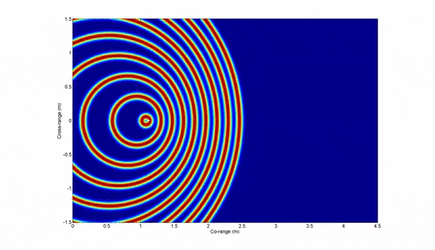Physics of Medical Scans
Doppler Ultrasound
“Doppler ultrasound” can be used to find the velocity of a flowing medium using the Doppler Effect:
When the ultrasound wave reflects off the moving medium it changes the frequency of the echoes, resulting in a higher frequency if the medium is moving towards the transducer, and a lower frequency if it is moving away from the transducer
By measuring how the frequency of the ultrasound wave changes you can calculate how fast the medium is moving using the equation [1],
Where:
v is the velocity of the tissue
c is the average speed of ultrasound in soft tissue (1540 m/s)
f_p is the difference between the emitted and reflected ultrasound frequencies
f_0 is the frequency of ultrasound emitted from the transducer
is the angle between the path of the ultrasound beam and that of the direction of flow of the medium
Doppler ultrasound has been used mostly to measure the rate of blood flow through the heart and major arteries
References:
[1] Hauff, Peter & Reinhardt, Michael & Foster, Stuart. (2008). Ultrasound Basics. Handbook of experimental pharmacology. 185. 91-107. 10.1007/978-3-540-72718-7_5.)

What is the doppler effect?
It is when the frequency of a wave changes as the source or observer (of the wave) move towards (or away) from eachother. This change also occurs when the ultrasound rebounds from a moving particle

Fig. 1: The doppler effect occuring as the source of waves moves
(source: Gfycat)
You can see the waves compress in front of the source (higher frequency) and spread out behind the source (lower frequency)